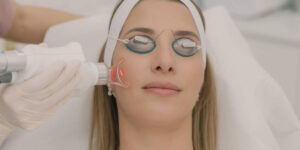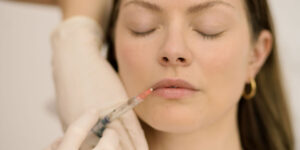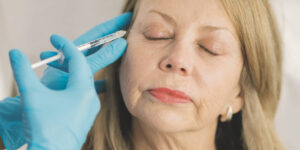

Dermal Filler for Scars
Scars can be a source of self-consciousness and affect a person’s self-esteem. Whether they’re the result of acne, surgery, or injury, scars can be difficult to hide. While there are various treatments available to reduce the appearance of scars, dermal fillers can be a simple, non-surgical solution to improving the texture and appearance of the skin. When injected into depressed scars, dermal fillers help to raise the depressed area and smooth out the skin, reducing the appearance of the scar.
It’s important to note that not all types of scars can be treated with dermal fillers. Raised scars, such as hypertrophic or keloid scars, may not be improved with this treatment and may require other options such as laser therapy or surgical scar revision.
Treatment snapshot
60 mins
appointment
2/5
discomfort
1-3 days
downtime
Lasts
9-24 months
FAQs
Dermal fillers can effectively improve the appearance of acne scars. By injecting fillers into the depressions left by acne scars, the skin’s texture can be enhanced. The fillers, typically made of hyaluronic acid, plump up the depressed areas, creating a smoother and more even surface. This helps to minimise the visibility of acne scars and promote a more uniform complexion.
Dermal fillers can be used to treat various types of scars, including:
- Acne scars: Dermal fillers can be used to fill in the depressions left by acne scars, improving the overall texture of the skin.
- Surgical scars: Dermal fillers can be used to reduce the appearance of depressed or indented surgical scars, such as those from a facelift or breast augmentation.
- Traumatic scars: Dermal fillers can be used to fill in the sunken or depressed areas of scars resulting from injuries, such as cuts or burns.
- Chickenpox scars: Dermal fillers can be used to improve the appearance of pitted scars left behind by severe cases of chickenpox.
The duration of the results of dermal filler treatment for scars can vary depending on the type of filler used, the location and severity of the scars, and individual factors such as metabolism and lifestyle habits. In general, the results last 9-24 months and usually require maintenance treatments to maintain the desired results. Some fillers may last longer than others, but this can also depend on how your body reacts to the filler and how quickly your body metabolises it.
Scar treatment is usually well tolerated and most people describe the treatment as uncomfortable rather than painful. Our doctors typically use numbing creams or local anaesthetic to minimise discomfort during the treatment. Additionally, most dermal fillers contain lidocaine, a local anaesthetic, which can also help reduce discomfort during the procedure.
After the treatment, it’s common to experience some mild discomfort, swelling, and bruising at the injection site. This can typically be managed with over-the-counter pain relief medication and cold compresses.
As with any medical procedure, there is a potential risk for side effects with dermal filler treatment for scars. Most side effects are temporary and mild.
Common side effects include:
- Swelling, bruising, and redness at the injection site
- Mild discomfort, itching, or tenderness at the injection site
- Small lumps or bumps under the skin (these can usually be massaged out)
If you experience any unusual or concerning symptoms after the treatment, it’s important to contact us right away.
There are several alternative treatment options for scars besides dermal filler, including:
- Chemical peels: A chemical solution is applied to the skin to remove the top layer, promoting the growth of new, smoother skin.
- Microneedling: This treatment involves using a small device with fine needles to puncture the skin and stimulate collagen production.
- Laser Genesis: This treatment uses a non-invasive laser to heat the upper layers of the skin, stimulating collagen production and improving the appearance of scars.
- Radiofrequency Microneedling: This treatment uses a combination of radiofrequency energy and microneedling to promote collagen production and improve the appearance of scars.
- CO2 laser: This treatment uses a high-energy laser to resurface the skin, promoting the growth of new, smoother skin.









